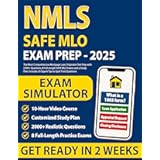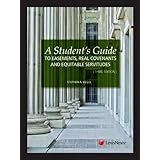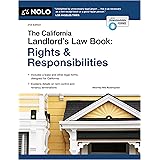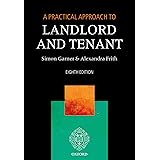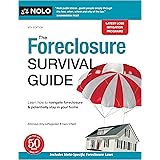Many people dream of achieving financial freedom, yet often feel trapped by the conventional wisdom that you need significant capital to build wealth. The idea of *buying real estate with no money* often sounds like a myth, a scheme too good to be true. However, as the accompanying video with Robert Kiyosaki powerfully demonstrates, this traditional mindset can be a major barrier to your financial growth. The journey to becoming a successful real estate investor begins not with a large bank account, but with a fundamental shift in your understanding of money, assets, and debt.
For too long, society has instilled a fear of debt and a belief that a personal residence is an ultimate asset. Yet, renowned financial educator Robert Kiyosaki consistently challenges these notions, offering a counter-intuitive approach to wealth creation through real estate. His philosophy, often popularized through the “Rich Dad Poor Dad” series, focuses on leveraging financial intelligence to make money work for you, rather than endlessly working for money. This article will delve deeper into the powerful principles highlighted in the video, showing you how to strategically acquire properties and generate significant cash flow, potentially with minimal or even zero upfront capital.
Shifting Your Mindset: Assets vs. Liabilities in Real Estate Investing
The foundation of Robert Kiyosaki’s financial philosophy rests on a crucial distinction: understanding the difference between an asset and a liability. While these terms are frequently misunderstood, their implications for your financial future are profound. An asset is simply defined as anything that puts money into your pocket, consistently increasing your net worth. Conversely, a liability is anything that takes money out of your pocket, draining your resources over time.
Consider the example of a personal residence, which many typically view as their primary asset. As highlighted in the video, a home you live in often incurs ongoing expenses like mortgage payments, property taxes, insurance, and maintenance. If these costs amount to $2,000 per month, that’s $2,000 flowing out of your pocket each month, making it a liability by Kiyosaki’s definition. In contrast, an investment property, such as a rental duplex, can be a true asset. If its total monthly expenses are $1,500 but it generates $2,500 in rental income, you’re left with a positive cash flow of $1,000 monthly. This stark difference underscores the importance of shifting your perspective from consumer liabilities to income-generating assets when considering real estate.
The Strategic Power of Debt: Good Debt vs. Bad Debt
Conventional wisdom often demonizes all forms of debt, urging individuals to avoid it at all costs. However, a cornerstone of Kiyosaki’s teaching, and a critical component of *buying real estate with no money*, is the concept of “good debt” versus “bad debt.” This distinction is not about the amount of debt, but rather its purpose and impact on your financial health. Good debt is strategically utilized to acquire assets that generate positive cash flow or appreciate in value. It acts as a powerful tool to amplify your investment returns.
Imagine securing a mortgage for a rental duplex, as discussed in the video. If the property costs $200,000, and you finance 80% ($160,000) of it, this borrowed money is considered good debt. By renting out both units for $1,500 each, generating $3,000 in monthly income, you can cover $2,500 in expenses, leaving a positive cash flow of $500. This example illustrates how borrowed money, when deployed wisely, can create income for you. On the other hand, bad debt is used to purchase liabilities that depreciate in value or incur ongoing expenses without generating income, such as a luxury car, an expensive wardrobe, or a new iPhone, as the video aptly points out. Robert Kiyosaki himself famously acquired his first investment property in Maui, Hawaii, for $18,000 in the 1970s using a credit card, which he later regretted selling given its current valuation of $400,000-$500,000. This anecdote highlights the transformative potential of good debt when combined with financial literacy.
Decoding Real Estate Value: NOI and Cap Rate Explained
For serious investors exploring how to buy real estate with little or no money, understanding advanced metrics like Net Operating Income (NOI) and Capitalization Rate (Cap Rate) is indispensable. These concepts provide vital insights into a property’s profitability and market value, empowering you to make informed investment decisions. NOI represents the property’s income after deducting all operating expenses, but before accounting for mortgage payments or income taxes. To calculate NOI, you subtract expenses such as property taxes, insurance, maintenance, and vacancy costs from the total rental income. A robust NOI indicates a healthy, profitable property with strong cash flow potential.
Banks and financial institutions heavily rely on NOI when evaluating loan applications for investment properties. A higher NOI demonstrates a property’s greater capacity to generate income and service debt, significantly increasing your likelihood of securing favorable financing. In contrast, the Capitalization Rate, or Cap Rate, offers a quick way to assess an investment’s potential return. It is calculated by dividing the property’s NOI by its current market value, expressed as a percentage. For instance, if a property has an NOI of $50,000 per year and a market value of $1 million, its Cap Rate would be 5%. This metric allows investors to compare different properties’ income-generating potential relative to their price, acting as a crucial benchmark in competitive markets. Understanding these metrics enables investors to not only identify promising opportunities but also to communicate effectively with lenders and accurately value potential acquisitions.
The Path to Infinite Returns: Leveraging Debt in Real Estate
The ultimate goal for many aspiring real estate investors is to achieve “infinite returns,” a state where your initial capital is recouped, and the property continues to generate income without any of your own money invested. This seemingly magical outcome is entirely possible through the strategic application of leveraging debt, often referred to as using “Other People’s Money” (OPM). The video outlines a compelling six-step process that illustrates precisely how this can be achieved, transforming properties into self-sustaining wealth generators.
Step 1: Borrowing Money Strategically
The initial step in this journey involves securing a mortgage or a loan to purchase a property. This means you are intentionally leveraging debt, using a combination of your own funds (even a minimal down payment) and, more significantly, the bank’s funds. A strong credit rating is paramount here, as it influences the terms and interest rates you receive. Taking proactive steps, such as meeting with a bank advisor to understand how to improve your creditworthiness, lays a solid foundation for your real estate ventures.
Step 2: Improving the Property for Value Creation
Once a property is acquired, the real work of value creation begins. Strategic improvements and renovations can significantly boost its market appeal and rental potential. This might involve modernizing a kitchen, adding an extra bedroom, enhancing curb appeal with landscaping, or simply upgrading outdated fixtures. Each thoughtful improvement not only increases the property’s aesthetic value but also directly contributes to its capacity to generate higher rental income.
Step 3: Increasing Net Operating Income (NOI)
As property improvements are completed, your focus shifts to optimizing the Net Operating Income (NOI). Enhanced features often justify higher rental rates, attracting better quality tenants and reducing vacancy periods. By effectively managing expenses and maximizing rental income, you are directly increasing the property’s profitability. A higher NOI makes the property more attractive to future lenders and increases its overall valuation.
Step 4: Refinancing to Unlock Equity
With property improvements made and NOI increased, the property’s value typically appreciates. This creates equity, which can then be accessed through refinancing. Refinancing involves obtaining a new loan that pays off the original mortgage, often allowing you to borrow against the property’s increased value. This process essentially converts a portion of your property’s equity into usable cash, providing capital for your next investment or for recouping your initial investment.
Step 5: Recouping Initial Investment for Infinite Returns
The true magic of the “infinite return” strategy culminates in this step. If the refinanced loan amount is equal to or even higher than your initial investment – including your down payment and any renovation costs – you effectively get your initial capital back. This means you are now owning an income-producing asset without any of your own money tied up in it. Your original investment can then be redeployed into another property, accelerating your wealth-building cycle.
Step 6: Ongoing Ownership and Sustained Cash Flow
Even after recouping your initial investment through refinancing, you retain full ownership of the property. It continues to generate consistent rental income. At this stage, the rental income should comfortably exceed the new mortgage payments, operating expenses, and debt service, resulting in a robust positive cash flow. Because your initial investment has been returned, any subsequent profits derived from this property are considered infinite returns, as they are generated without using your own capital. Furthermore, real estate investing offers compelling tax benefits, as debt repayment is often tax-free, and you can deduct numerous expenses and claim depreciation, significantly reducing your taxable income. While leveraging debt certainly carries risks, such as market fluctuations or unforeseen vacancies, careful market research, due diligence, and financial planning can mitigate these challenges, paving the way for substantial, long-term wealth creation. It is this strategic approach to *buying real estate with no money* that empowers ordinary individuals to build extraordinary financial futures.



